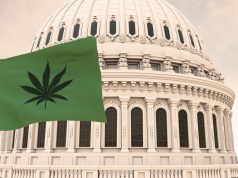
There has been encouraging news on the hemp front. Rep. Jared Polis and a few bipartisan representatives got a provision passed into the FARM bill last year that allows colleges, universities and state departments of agriculture to grow test plots of hemp for industrial uses. Twelve states — California, Colorado, Indiana, Kentucky, Maine, Montana, Nebraska, North Dakota, Oregon, Utah, Vermont and West Virginia — now have laws to provide for hemp production without federal approval.%u2028
These are positive first steps in returning a multi-billiondollar industrial agriculture industry to the United States after 70 years in the grip of THC insanity among American politicians and policy makers. No matter that hemp hasn’t, nor ever will, get anyone high, it is still officially classified as a Schedule 1 drug, more dangerous even than methamphetamine and cocaine.
The enthusiasm to end this bullshit forever and bring hemp into the 21st century is growing locally, too. A University of Colorado team under the leadership of professor Nolan Kane of the ecology and evolutionary biology department is working to develop a genetic map of the cannabis genus.
There were so many people at a public meeting I attended in January that included presentations from industry consultants and a state agriculture specialist at the George Reynolds Library in Boulder that officials had to close it down. Industrial hemp, with literally thousands of uses and now available only by import by those manufacturers who use it today, could provide needed boosts to American and Colorado agriculture, and local farmers know it.
This year they are putting plants in the ground to find out what works and what doesn’t, building seed banks and connecting with other farmers around the globe with similar climates, day lengths and growing seasons. This kind of informationsharing and the CU genome project will help lay the groundwork for all research into the manufacture of industrial hemp, which might even supplant THC cannabis as the country’s most-grown crop. And Colorado is in the forefront of all of this.
I urge anyone interested in hemp, either as a business idea or just interest in a fascinating, misunderstood plant, to pick up a copy of Doug Fine’s Hemp Bound: Dispatches From the Front Lines of the Next Agricultural Revolution (Chelsea Green Press). Fine covers all your questions about hemp in a short, entertaining book that Willie Nelson calls “a blueprint for the America of the future.”
To call Fine merely a hemp advocate would do a disservice to his advocacy. He is a believer, an apostle, a John the Baptist crying in the wilderness, heralding a great truth to the world at large. “Hemp hands us a ninth-inning comeback opportunity,” he writes. “The worldwide cannabis industry can play a major role in our species’ longshot sustainable resource search and climate stabilization project.”
But here’s the deal. Fine is a realist, and a journalist, too, both of which make Hemp Bound a great addition to the literature surrounding a once-mainstay U.S. agricultural product.
Though he is hot for hemp, Fine isn’t just endlessly praising it, though he does plenty of that. He’s out on the road talking with people involved in all sides of the industry — farmers, economists, capitalists — asking the tough questions of everyone he meets about hemp’s curious path to acceptance again after 70 years with the lights out.
Along the way he confronts hemp’s massive potential and the forces still in play that have kept its possibilities hidden since the 1930s in America, and put the country a few decades behind the rest of the world in hemp production. It’s a plant that works well as a rotational crop, something farmers are always looking for, and it has deep roots and doesn’t require pesticides.
He discusses “dual cropping,” the concept of creating a seed harvest and a fiber harvest. He visits a Canadian non-profit that has developed a hood for a tractor made of a hemp composite, and he talks with builders who are using hempcrete, a mixture of hemp pulp and lime that is being used in construction and as an alternative insulation material in homes and buildings.
It won’t be easy, but things are looking up. Out on the plains east of Denver, Fine comes across a scene that shows why hemp and cannabis legalization will ultimately succeed. On July 4 last year, a day he chose carefully, fifth-generation conservative and farmer Michael Bowman, of Byers, Colorado, held a ceremonial planting of European hemp. Bowman’s family has grown corn for decades in an area that has been decimated by recent droughts, an area where many actively seek to secede from the state. Bowman cast his actions in strict, patriotic terms.
“Our own Independence Day two and a quarter centuries ago started with a shot,” Bowman said. “We are the leaders in Colorado on this issue. We know we need to make a transition to a new farming mind-set, in order to make a real difference for our grandchildren. That’s our ammo — planting hemp in a GMO cornfield.”
Respond: [email protected]














